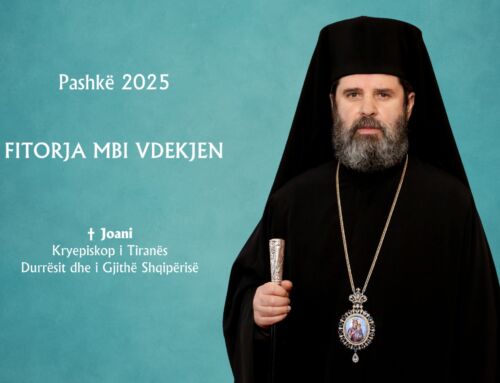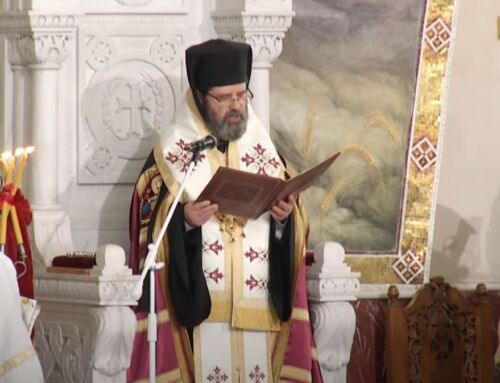Has Been Published for the First Time
The Codex of Korça 93 is part of the collection of one hundred Byzantine and post-Byzantine manuscripts preserved today in the Central State Archives of Tirana, Albania. The Codex is from the 10th century and is written in the form of a cross, a fairly rare occurrence in the Byzantine manuscript tradition and is one of the oldest examples of this category on an international level. The script is of the Bouletée type, with small round letters of excellent calligraphic workmanship. Based on the paleographic and codicological characteristics, the transcribing country appears to have been the Patriarchate of Constantinople, while its¬ place of use was the Metropolis of Korça, whose precious treasure it has been for many centuries.
The publication of the Facsimile of this very important Codex was made possible by the contributions of the Inter-confessional Bible Society of Albania, the Orthodox Autocephalous Church of Albania, and the General Directorate of Archives of Albania. The Facsimile is accompanied by an exhaustive study of the Codex as a paleographic transcription of the Gospel of Luke with the corresponding translation in English. The circulation of 1,300 copies clearly indicates that the intention is that this publication be directed not only to a narrow circle of those directly interested, but to an even wider public who will be enlightened by and experience the importance of this Codex.
The two authors who worked on the study and qualitative preparation of this publication are historian-paleographer, Mr. Andi Rëmbeci of the Faculty of History in the University of Tirana, and paleographer, Mr. Sokol Çunga from the Central State Archives. The scientific care was conducted by the honored Professor, Mr. Agamemnon Celikas, a prominent personality of Byzantine Paleography on a global level.
It is worthy to be note the fact that a Facsimile edition of this type is the first in the history of documentary publications in Albania, and has been prepared with the cooperation of local institutions. The field of publication of these kinds of historic resources is of limited circulation in Albania, whether due to the isolation of the past or to the lack of experience and opportunities. The publication of this Codex, as universally representative of the intellectual activity during one of the most thriving cultural periods of Byzantium, in addition to its scientific importance, serve as a contribution to the promotion of cultural heritage in Albania.
Andi Rëmbeci









